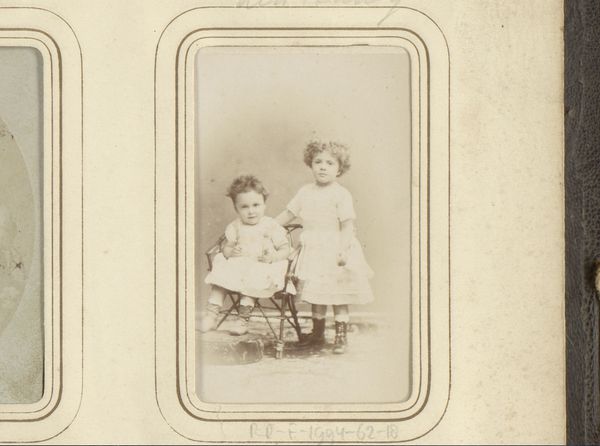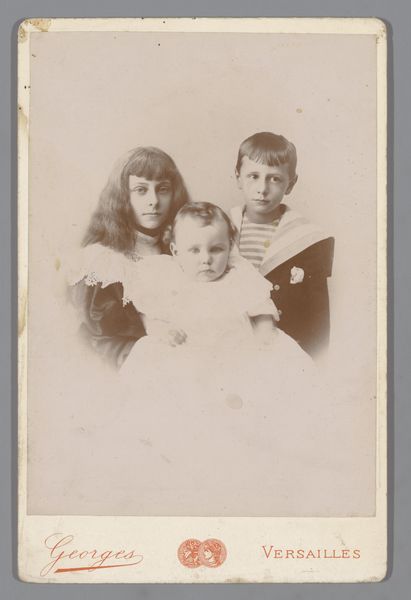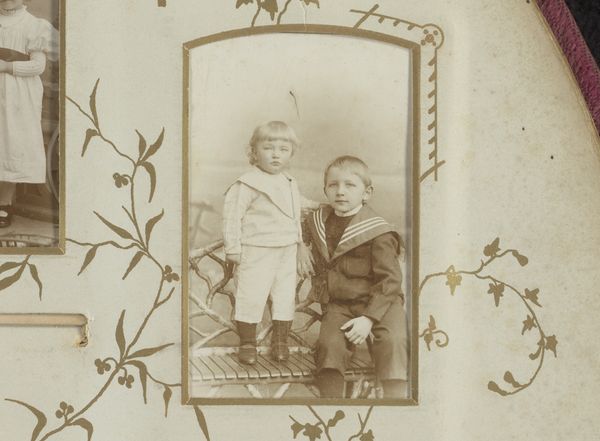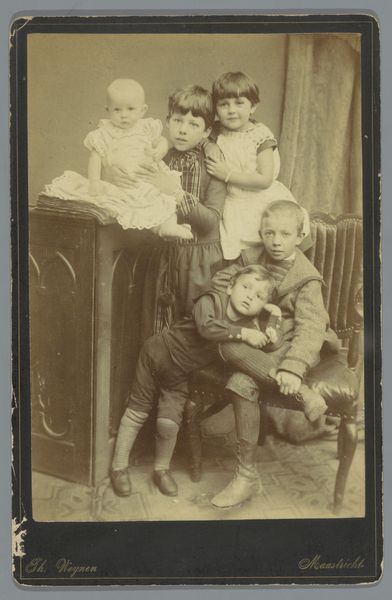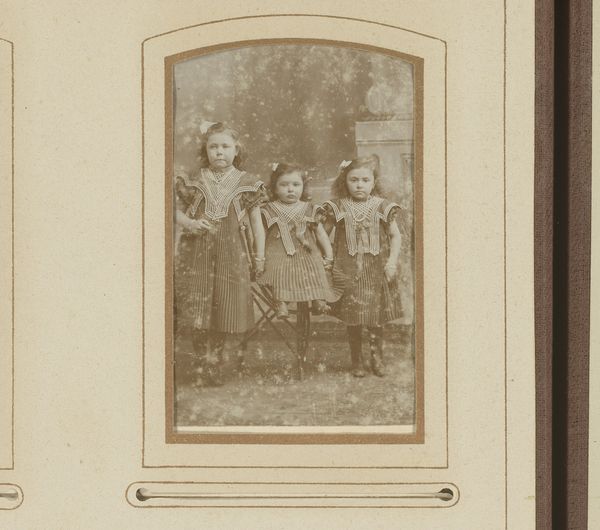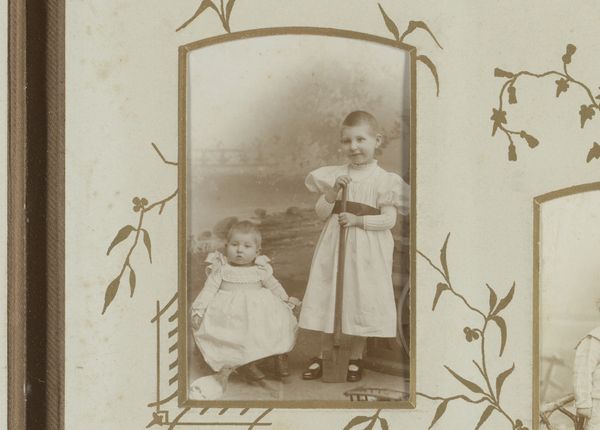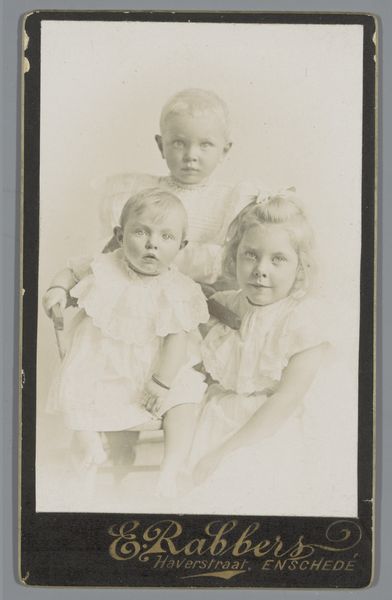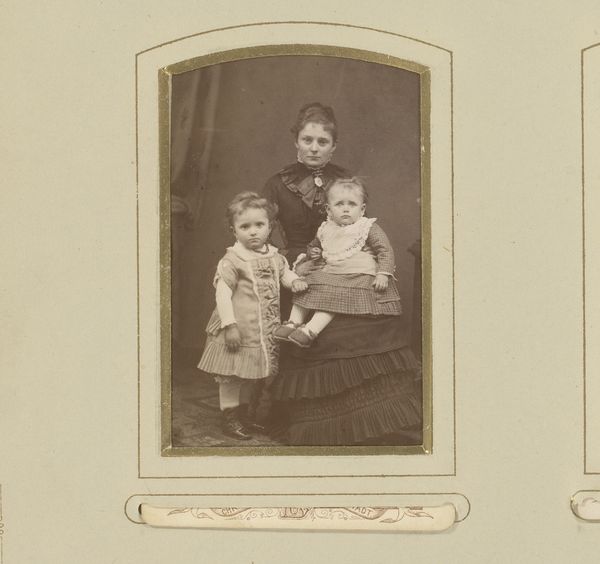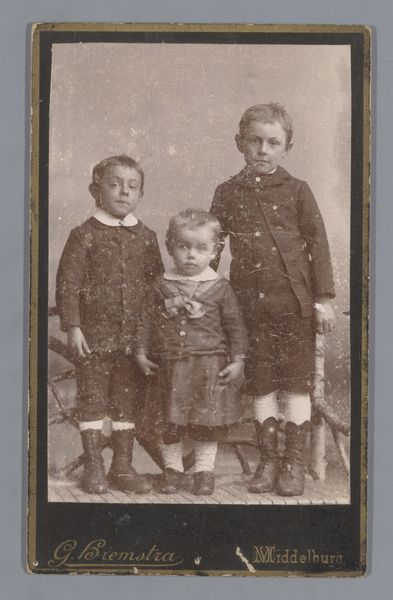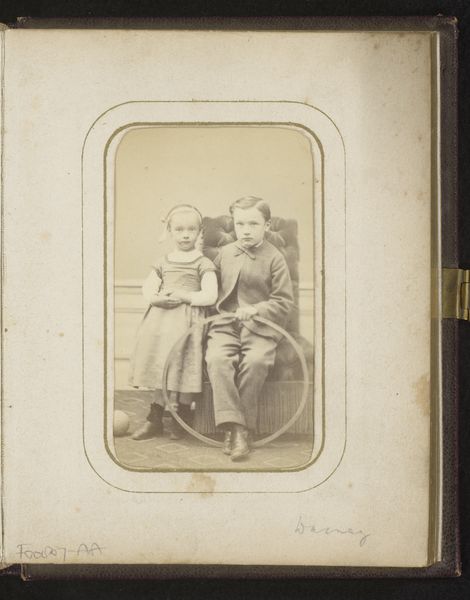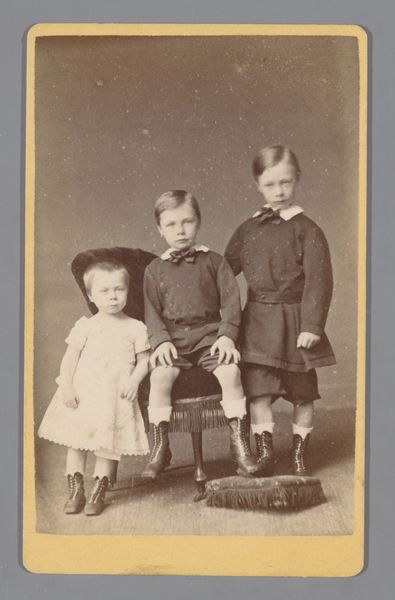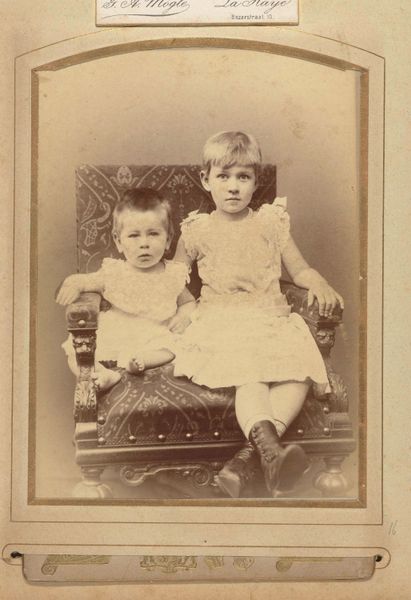
photography
#
portrait
#
photography
#
group-portraits
#
19th century
#
realism
Dimensions: height 84 mm, width 50 mm
Copyright: Rijks Museum: Open Domain
Curator: Here we have an intriguing photographic print entitled "Portret van twee meisjes en een jongen", or "Portrait of Two Girls and a Boy," attributed to Jacob Kuyper and dating roughly from 1880 to 1900. Editor: What strikes me immediately is the almost stark stillness, and how formally these children are presented. There’s a sobriety that’s quite touching, heightened by the limited tonal range. Curator: It's fascinating to consider the socio-economic implications of commissioning such a portrait during this era. This type of image would have likely been relatively costly and served as a potent display of bourgeois status and aspirations, wouldn't you agree? The children's clothing, too, is definitely saying something about who their parents wanted to be seen as. Editor: Absolutely. Note how the photograph as an object also reflects the prevailing aesthetics. The choice of photographic paper, the sepia toning, and even the studio backdrop, speak to a certain deliberate construction of image and material. The young boy is in that charming little sailor's suit. Was that a popular commodity for children? Curator: Precisely. The sailor suit became extremely popular due to Royal patronage but became widespread across many different levels of society at that time. The materiality extends beyond the subject matter; the print itself carries cultural significance as a crafted object intended for display and perhaps inheritance. We must also look at the availability of these textiles for lower socio economic communities too, to look at mass consumption across late 19th century cultures. Editor: And the studio's role, too. To what extent did the photographer shape the narrative presented to the viewer, particularly about ideas of ideal childhood and the value of family unity in that period? Curator: Precisely. Photographers like Kuyper would have certainly played a significant role in disseminating these notions of ideal bourgeois family life, reinforcing certain values and expectations within society through mass consumer imagery. Editor: Thinking about the children in this portrait, their serious expressions make me wonder about their experiences. Photography became more commonplace but the poses remain pretty rigid, what were the studio conditions at the time and how might the photograph allude to class consciousness and consumer behaviours of the era. It makes you really think about how things might have been behind that veil. Curator: It offers a valuable perspective on 19th-century social dynamics, the evolution of portraiture, and its profound implications for class and family life. Thank you for sharing this moment in time with us.
Comments
No comments
Be the first to comment and join the conversation on the ultimate creative platform.
